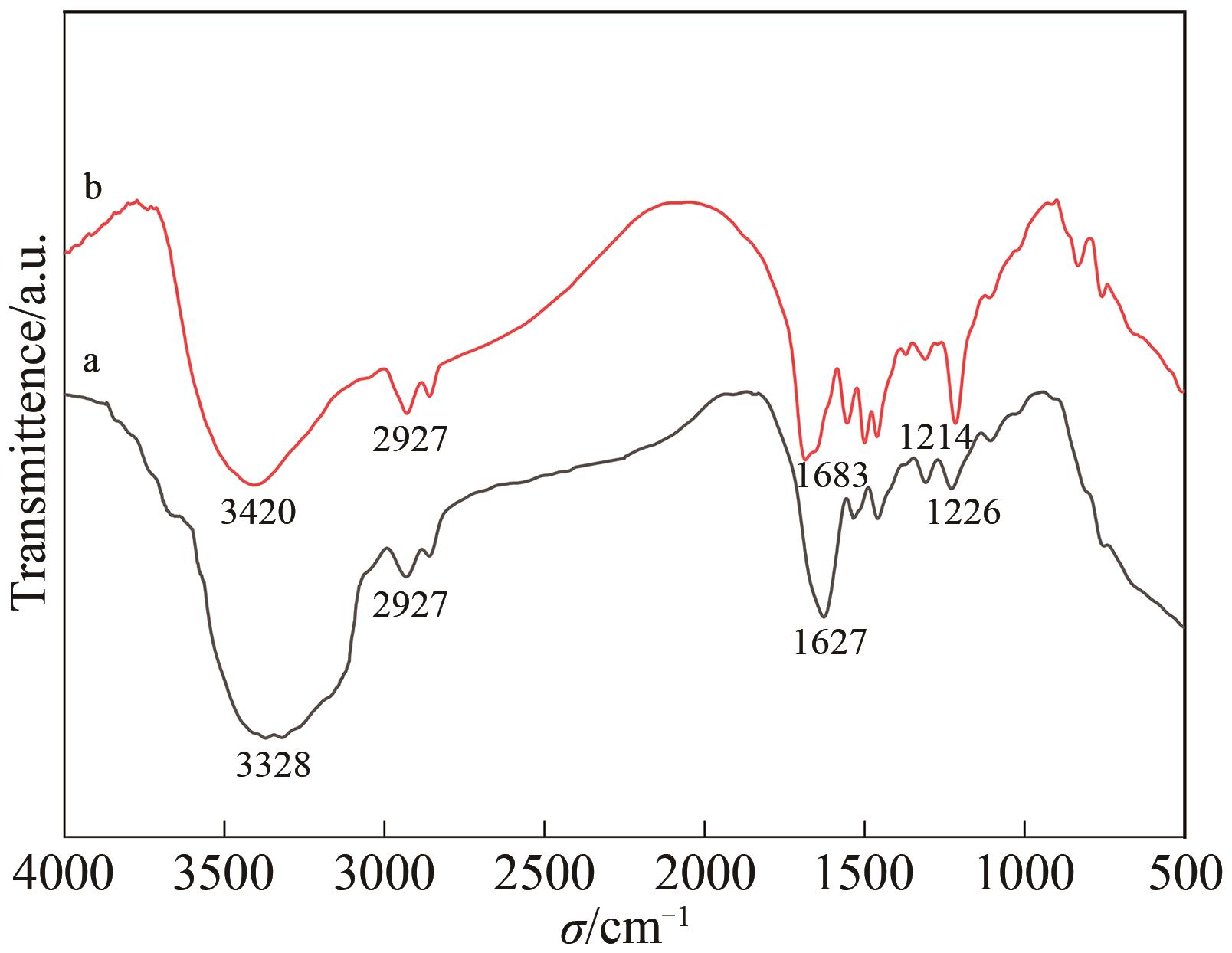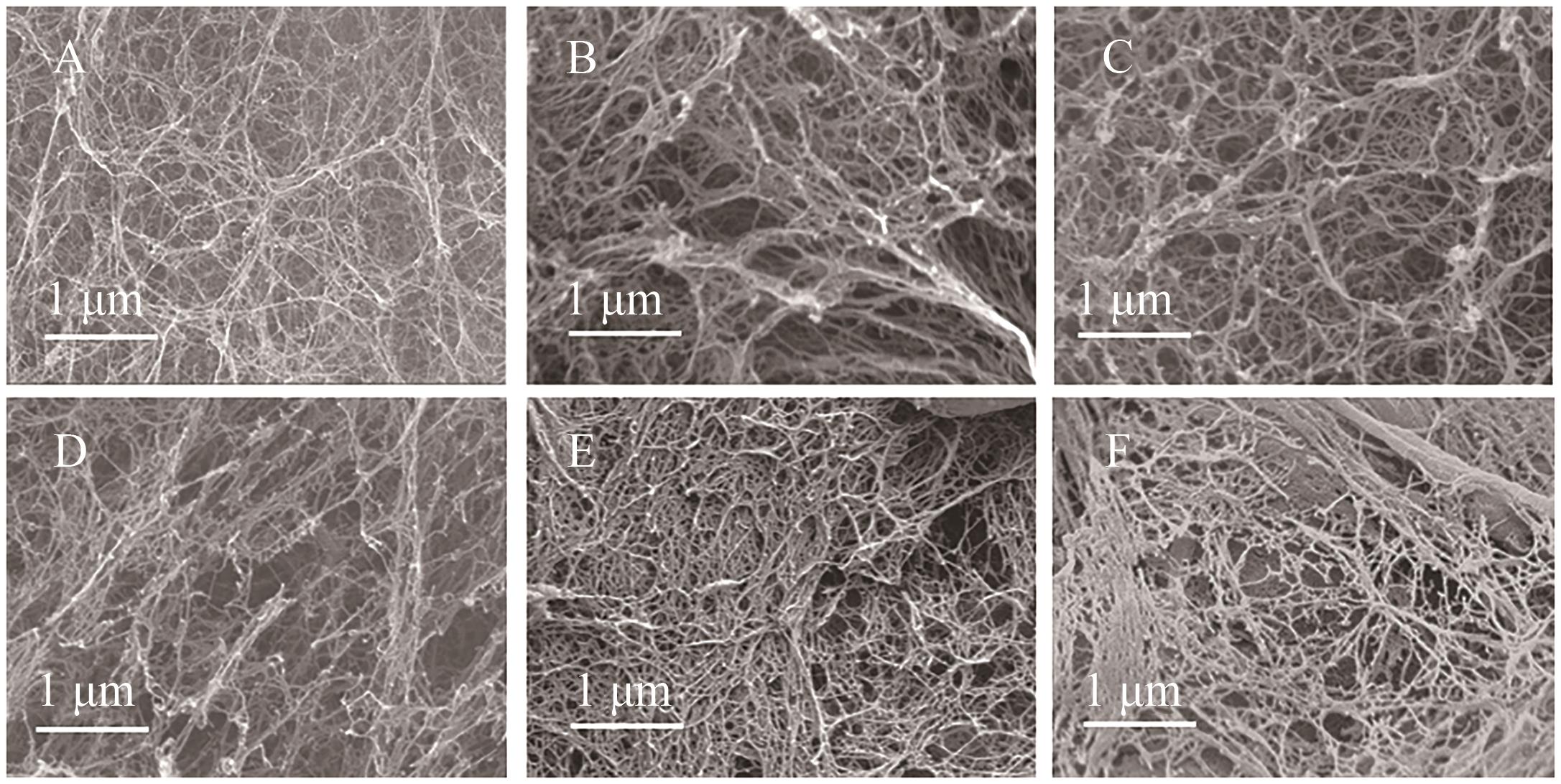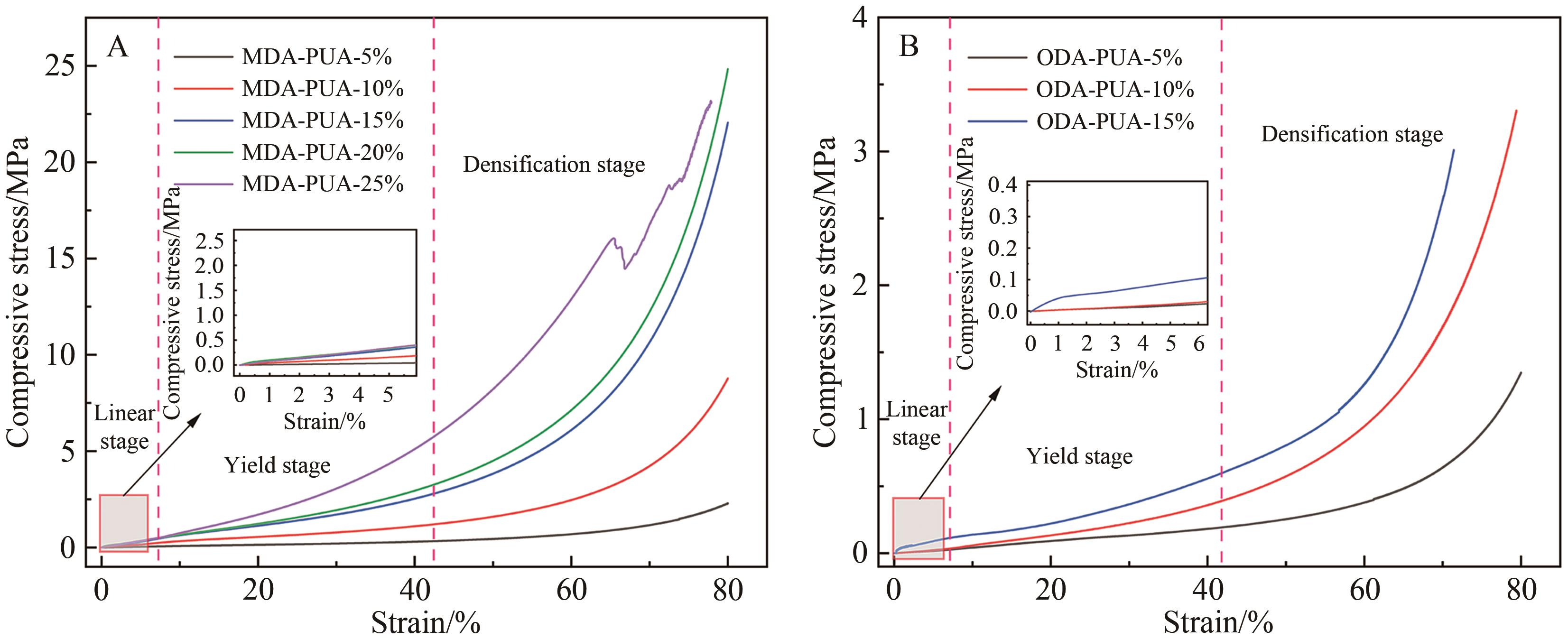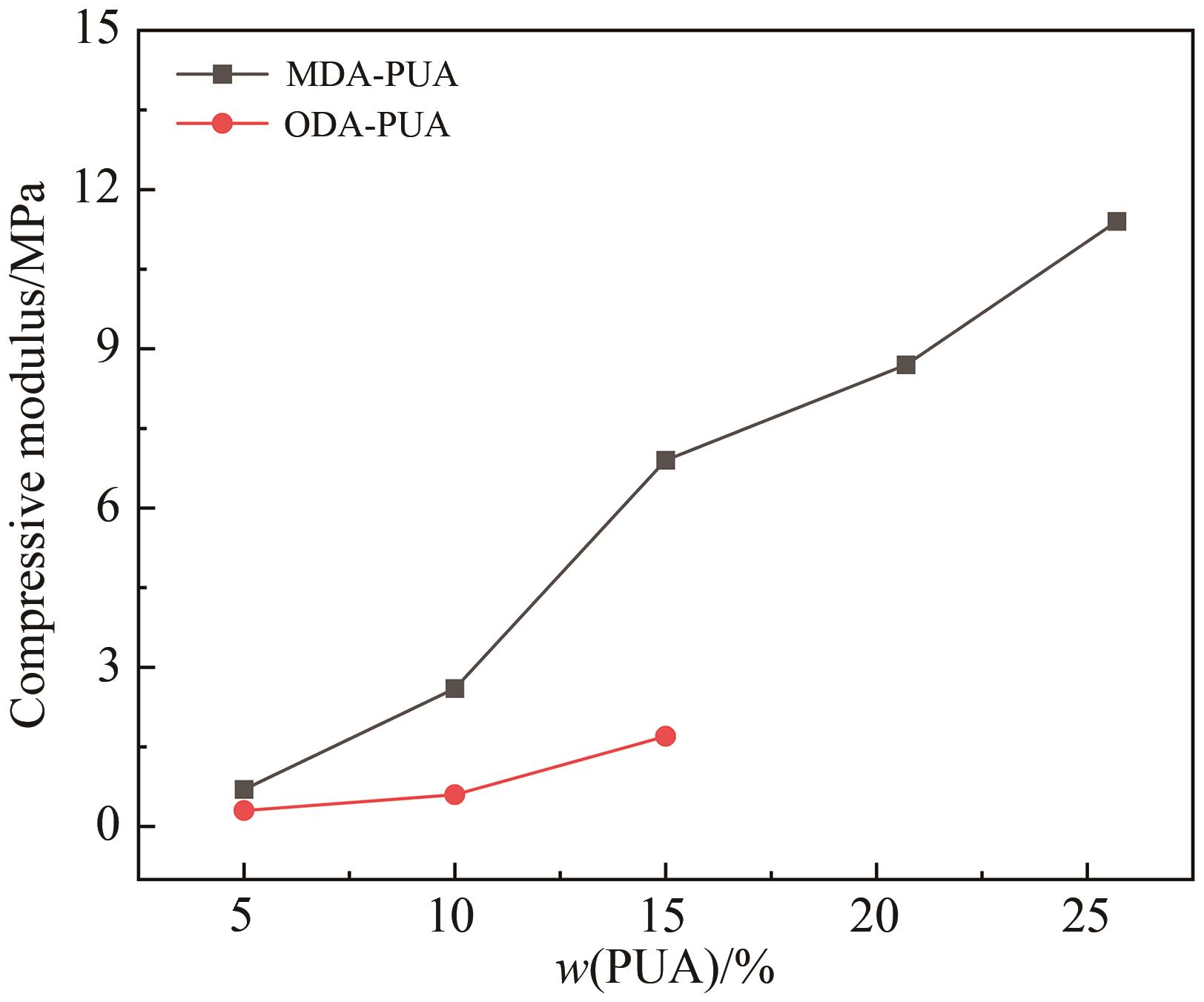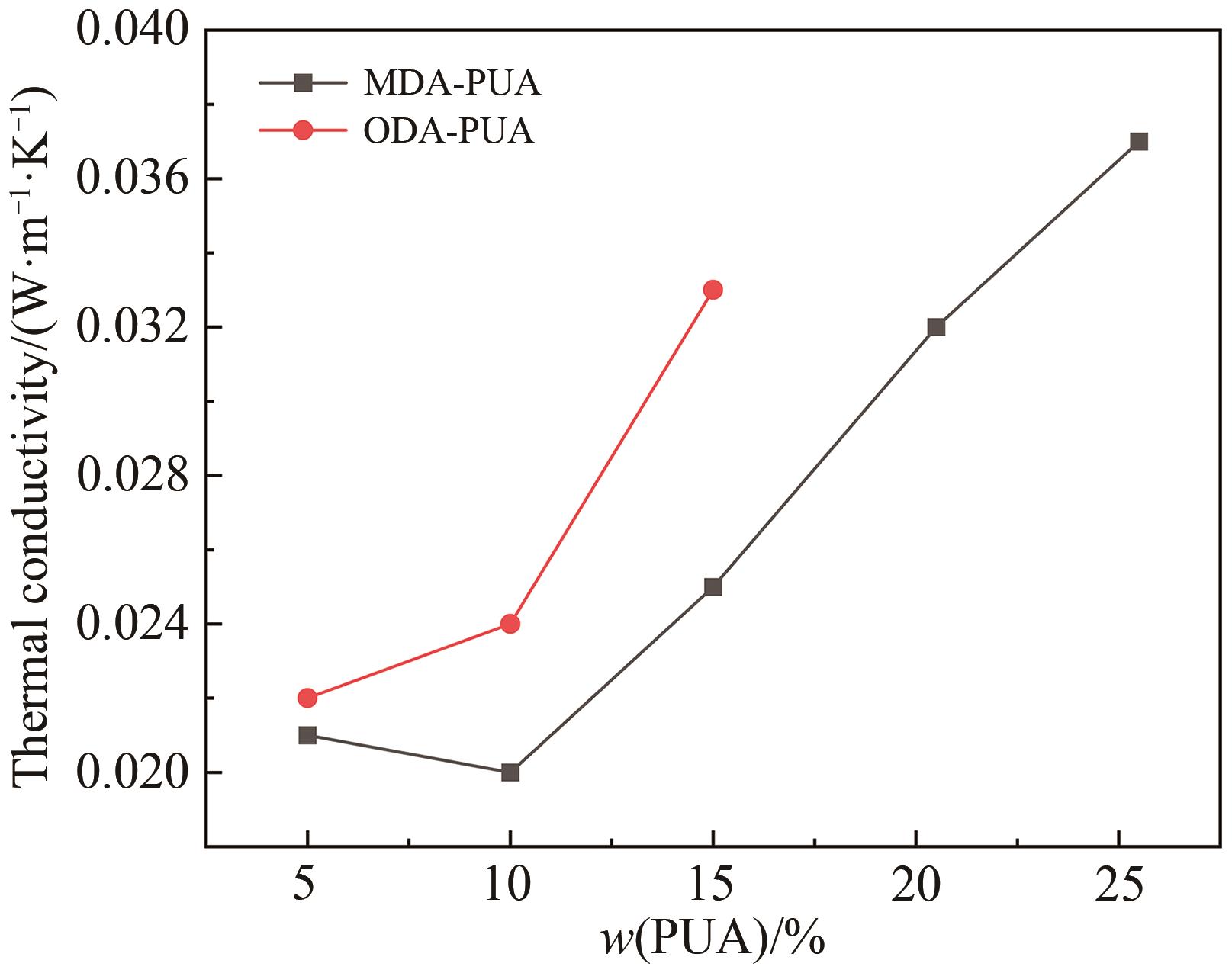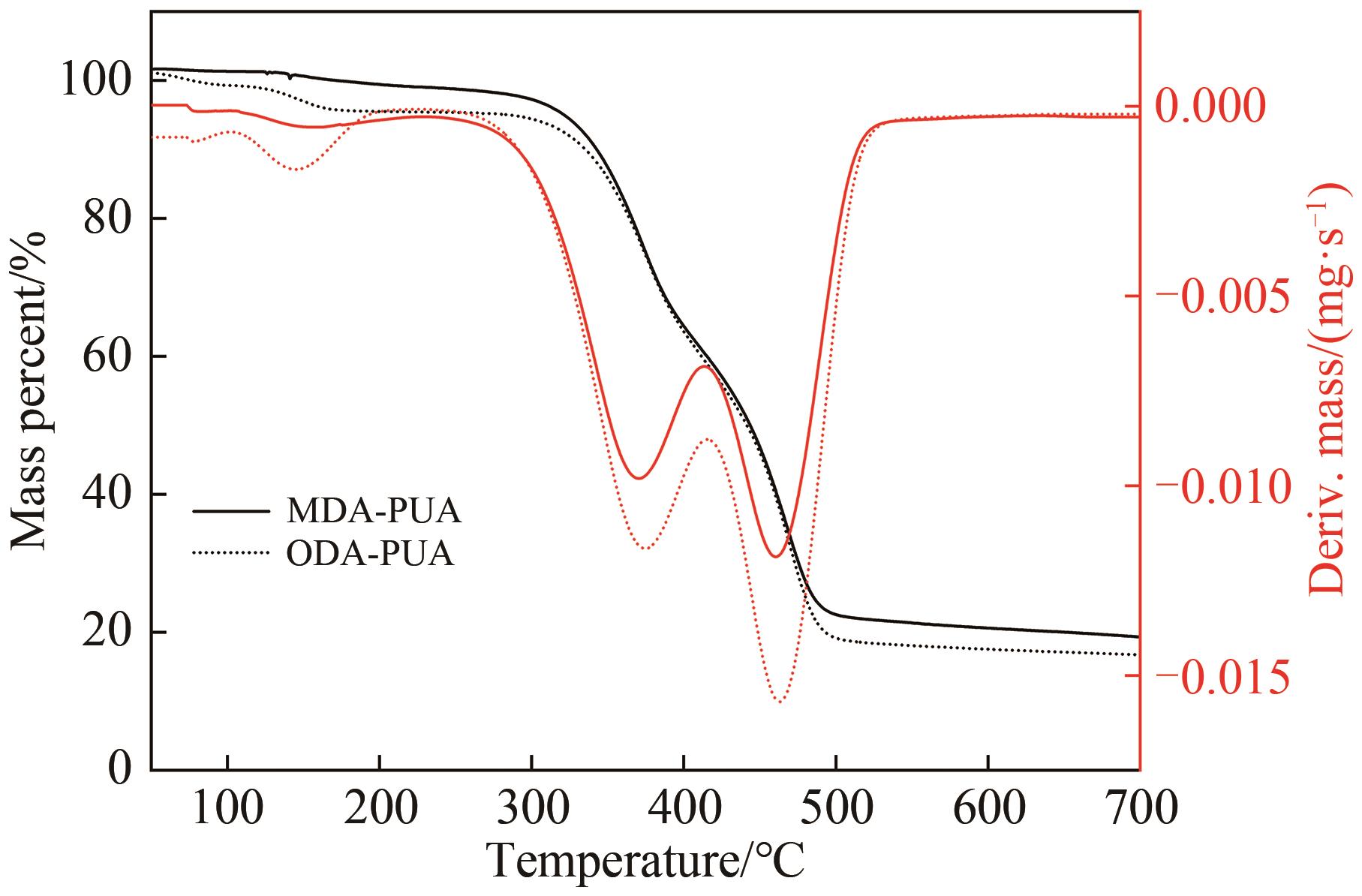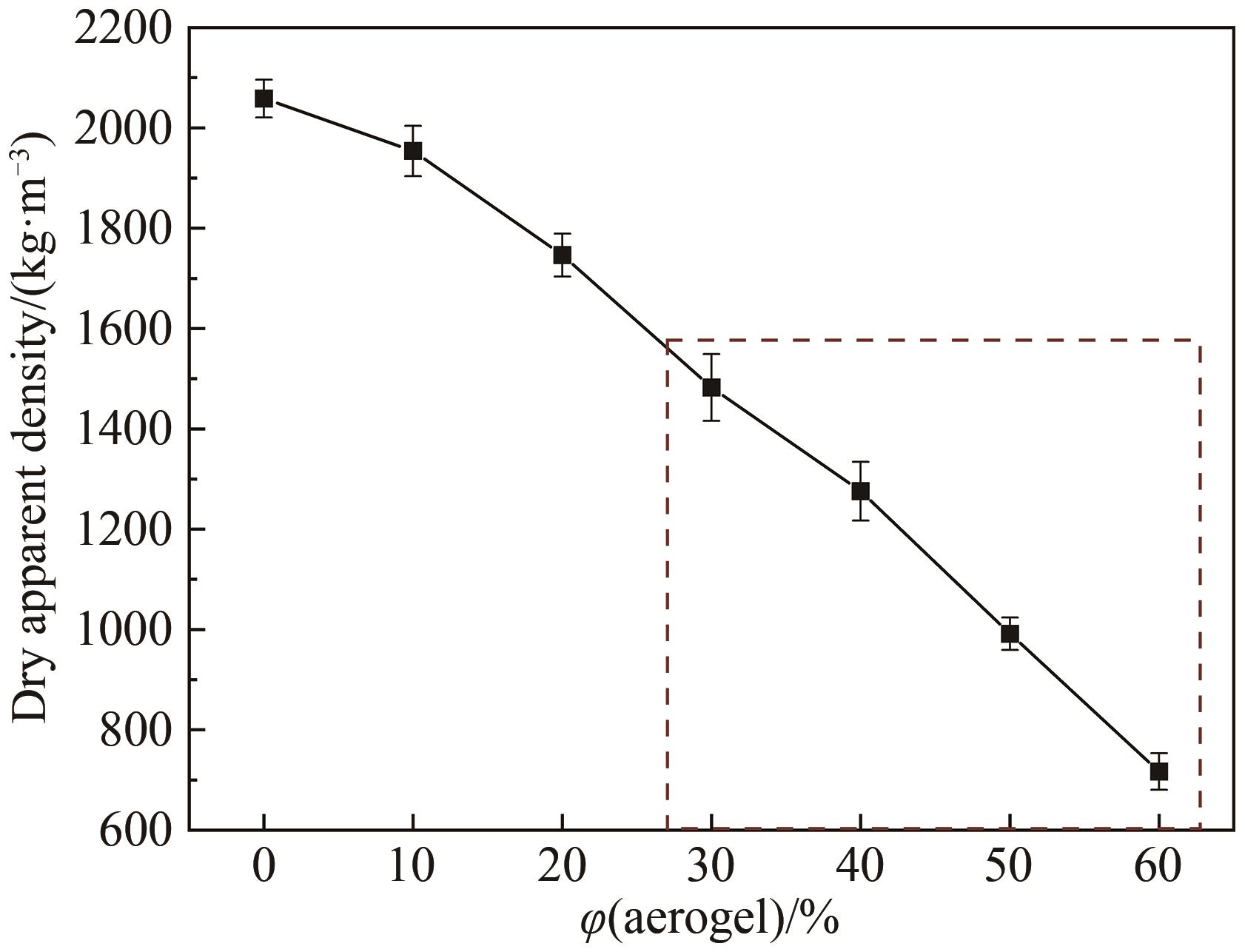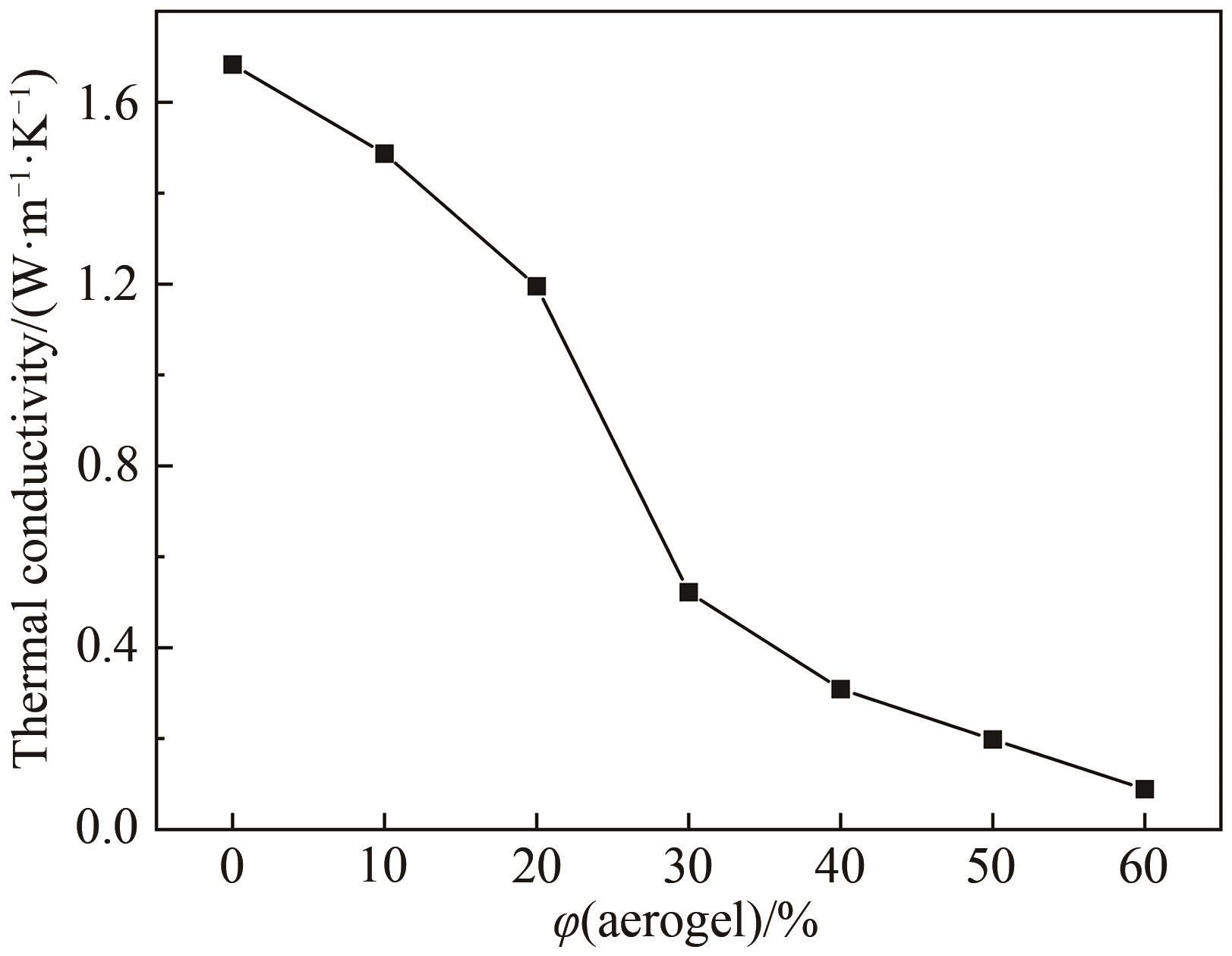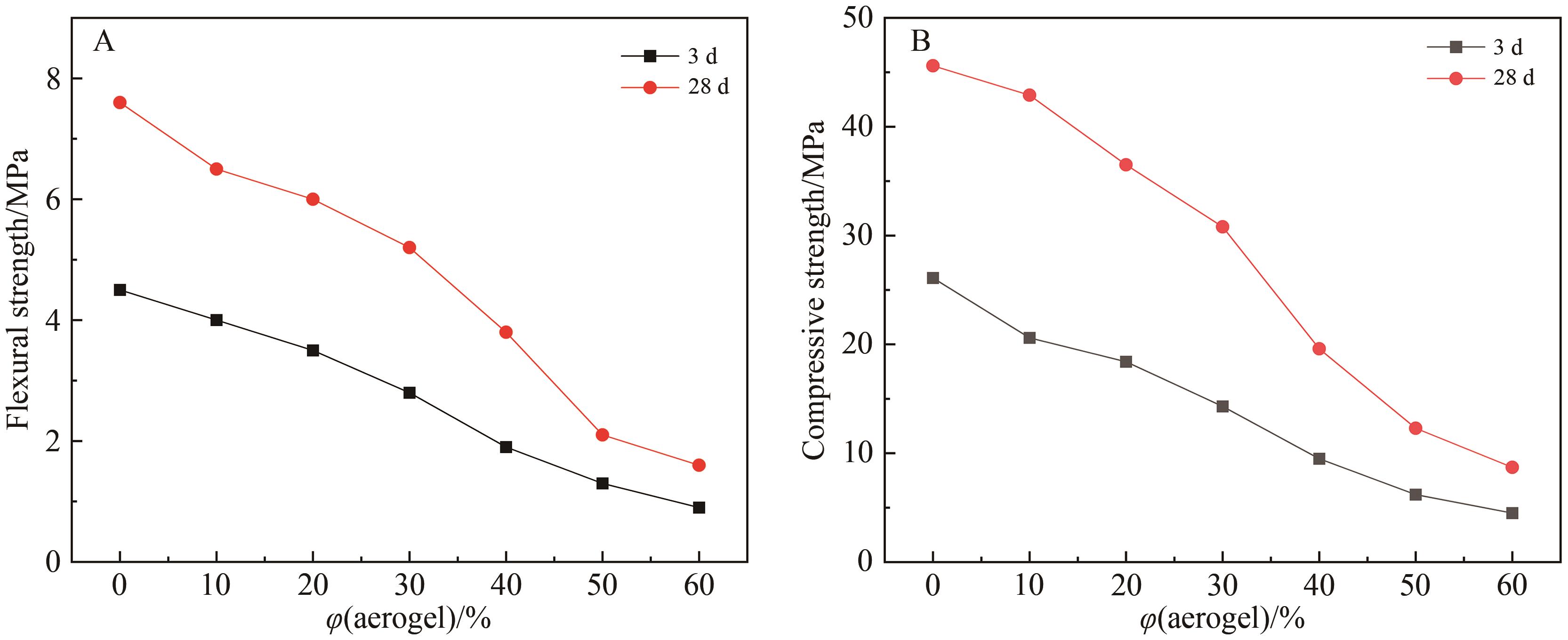
Chinese Journal of Applied Chemistry ›› 2025, Vol. 42 ›› Issue (2): 238-248.DOI: 10.19894/j.issn.1000-0518.240319
• Full Papers • Previous Articles Next Articles
Preparation of Polyurea Aerogels and the Effect on Lightweight Composite Mortar
Yu-Mei LUO( ), Yun ZHOU, Yi ZHOU, Ya-Fei SHAO
), Yun ZHOU, Yi ZHOU, Ya-Fei SHAO
- School of New Energy and Materials,Southwest Petroleum University,Chengdu 610500,China
-
Received:2024-10-14Accepted:2025-01-17Published:2025-02-01Online:2025-03-14 -
Contact:Yu-Mei LUO -
About author:luoyumei453@163.com
-
Supported by:the National Natural Science Foundation of China(52073239);the Open Fund of Sichuan Basalt Fiber Composite Material Development and Application Engineering Technology Research Center(2022SCXWYXWFC010)
CLC Number:
Cite this article
Yu-Mei LUO, Yun ZHOU, Yi ZHOU, Ya-Fei SHAO. Preparation of Polyurea Aerogels and the Effect on Lightweight Composite Mortar[J]. Chinese Journal of Applied Chemistry, 2025, 42(2): 238-248.
share this article
| No. | m(water)/m(cement) | φ(aerogel)/% | φ(sand)/% |
|---|---|---|---|
| 1 | 0.4 | 0 | 60 |
| 2 | 0.4 | 10 | 50 |
| 3 | 0.4 | 20 | 40 |
| 4 | 0.4 | 30 | 30 |
| 5 | 0.4 | 40 | 20 |
| 6 | 0.4 | 50 | 10 |
| 7 | 0.4 | 60 | 0 |
Table 1 Experimental formula of PUA aerogel composite mortar
| No. | m(water)/m(cement) | φ(aerogel)/% | φ(sand)/% |
|---|---|---|---|
| 1 | 0.4 | 0 | 60 |
| 2 | 0.4 | 10 | 50 |
| 3 | 0.4 | 20 | 40 |
| 4 | 0.4 | 30 | 30 |
| 5 | 0.4 | 40 | 20 |
| 6 | 0.4 | 50 | 10 |
| 7 | 0.4 | 60 | 0 |
| 1 | 梁志远, 牛云辉, 吕淑珍, 等. 丙烯酸乳液改性玻化微珠保温砂浆性能与孔结构研究[J].新型建筑材料, 2022, 49(6): 46-50. |
| LIANG Z Y, NIU Y H, LV S Z, et al. Study on properties and pore structure of latex modified vitrified microsphere thermal insulation mortar[J]. New Build Mater, 2022, 49(6): 46-50. | |
| 2 | 耿旗辉, 侯东帅, 王鑫鹏, 等. 利用膨胀珍珠岩制备超高性能轻及次轻骨料混凝土[J]. 青岛理工大学学报, 2022, 43(2): 11-18. |
| GENG Q H, HOU D S, WANG X P, et al. The preparation of ultra-high performance lightweight and semi-lightweight aggregate concrete with expanded perlite[J]. J Qingdao Univ Technol, 2022, 43(2): 11-18. | |
| 3 | 汤劲松, 曾桢. 聚苯乙烯泡沫塑料保温材料的研究进展[J]. 合成树脂及塑料, 2021, 38(2): 85-88. |
| TANG J S, ZENG Z. Research progress of polystyrene foam thermal insulation materials[J]. China Synth Resin Plast, 2021, 38(2): 85-88. | |
| 4 | 史俊杰, 史哲航, 李红周. 磷系阻燃剂插层镁铝型水滑石复合物的制备及其在热塑性聚氨酯中的阻燃应用[J]. 应用化学, 2023, 40(9): 1288-1301. |
| SHI J J, SHI Z H, LI H Z. Preparation of magnesium aluminum-type hydrotalcite compounds intercalated with phosphorus flame retardants and their flame retardant application in thermoplastic polyurethane[J]. Chin J Appl Chem, 2023, 40(9): 1288-1301. | |
| 5 | IDUMAH C I, EZIKA A C, OKPECHI V U. Emerging trends in polymer aerogel nanoarchitectures, surfaces, interfaces and applications[J]. Surf Interfaces, 2021, 25: 101258. |
| 6 | ADHIKARY S K, ASHISH D K, RUDZIONIS Z. Aerogel based thermal insulating cementitious composites: a review[J]. Energy Build, 2021, 245: 111058. |
| 7 | KIM S, SEO J, CHA J, et al. Chemical retreating for gel-typed aerogel and insulation performance of cement containing aerogel[J]. Constr Build Mater, 2013, 40: 501-505. |
| 8 | GAO T, JELLE B P, GUSTAVSEN A, et al. Aerogel-incorporated concrete: an experimental study[J]. Constr Build Mater, 2014, 52: 130-136. |
| 9 | 张明灿. 二氧化硅气凝胶制备建筑保温隔热材料[J]. 中国建材科技, 2012, 21(5): 31-34. |
| ZHANG M C. Preparation of thermal insulation block using in building by silica aerogel[J]. China Build Mater Sci Technol, 2012, 21(5): 31-34. | |
| 10 | 路珏, 蒋俊, 卢忠远, 等. 气凝胶-水泥复合多孔材料的孔结构与硬化性能[J]. 混凝土与水泥制品, 2020(9): 11-15. |
| LU Y, JIANG J, LU Z Y, et al. Study on pore structure characterization and hardened properties of aerogel-cement porous composites[J]. China Concr Cem Prod, 2020(9): 11-15. | |
| 11 | FICKLER S, MILOW B, RATKE L, et al. Development of high performance aerogel concrete[J]. Energy Procedia, 2015, 78: 406-411. |
| 12 | NG S, JELLE B P, SANDBERG L, et al. Experimental investigations of aerogel-incorporated ultra-high performance concrete[J]. Constr Build Mater, 2015, 77: 307-316. |
| 13 | WEIGOLD L, MOHITE D P, MAHADIK-KHANOLKAR S, et al. Correlation of microstructure and thermal conductivity in nanoporous solids: the case of polyurea aerogels synthesized from an aliphatic tri-isocyanate and water[J]. J Non-Cryst Solids, 2013, 368: 105-111. |
| 14 | MALAKOOTI S, CHURU H G, LEE A, et al. Sound transmission loss enhancement in an inorganic-organic laminated wall panel using multifunctional low-density nanoporous polyurea aerogels: experiment and modeling[J]. Adv Eng Mater, 2018, 20(6): 1700937. |
| 15 | PRICE M A, ASLAM T D, QUIRK J J, et al. Analysis of steady compaction waves in polyurea aerogel[J]. AIP Conf Proc, 2018, 1979(1): 110016. |
| 16 | WHITWORTH N, LAMBOURN B, CHAU R, et al. A single-phase analytic equation of state for solid polyurea and polyurea aerogels[J]. AIP Conf Proc, 2018, 1979(1): 30007. |
| 17 | PACHECO A H, GUSTAVSEN R L, ASLAM T D, et al. Hugoniot based equation of state for solid polyurea and polyurea aerogels[J]. AIP Conf Proc, 2017, 1793(1): 120029. |
| 18 | 罗玉梅. 耐温绝热硬质聚氨酯泡沫塑料的制备和性能研究[D]. 成都: 西南石油大学, 2018. |
| LUO Y M. Preparation and properties of rigid polyurethane foam plastics with thermal resistance and heat insulation performance[D]. Chengdu: Southwest Petroleum University, 2018. | |
| 19 | 李洁, 孙华建, 曾佳, 等. 潮气固化聚脲树脂的制备与力学性能研究[J]. 西北师范大学学报(自然科学版), 2024, 60(5): 20-24. |
| LI J, SUN H J, ZENG J, et al. Preparation and mechanical performance of moisture cured polyurea resin[J]. J Northwest Norm Univ (Nat Sci Ed), 2024, 60(5): 20-24. | |
| 20 | WU X,WU Y, ZOU W, et al. Synthesis of highly cross-linked uniform polyurea aerogels[J]. J Supercrit Fluids, 2019, 151: 8-14. |
| 21 | PATRINA P, IRINA S, TAMARA A, et al. Polyurea-crosslinked biopolymer aerogel beads[J]. RSC Adv, 2020, 10(67): 40843-40852. |
| 22 | LEVENTIS N, SOTIRIOU-LEVENTIS C, CHANDRASEKARAN N, et al. Multifunctional polyurea aerogels from isocyanates and water. a structure-property case study[J]. Chem Mater, 2010, 22(24): 6692-6710. |
| 23 | 曹路晴, 乔扬, 谢晶, 等. 石墨烯气凝胶的压缩力学性能研究[J]. 兵工学报, 2024, 45(7): 2364-2373. |
| CAO L Q, QIAO Y, XIE J, et al. Study on compressive mechanical properties of graphene aerogel[J]. Acta Armamentarii, 2024, 45(7): 2364-2373. | |
| 24 | LEE K J, GOULD L G, RHINE W. Polyurea based aerogel for a high performance thermal insulation material[J]. J Sol Gel Sci Technol, 2009, 49(2): 209-220. |
| 25 | WEIGOLD L, MOHITE P D, MAHADIK-KHANOLKAR S, et al. Correlation of microstructure and thermal conductivity in nanoporous solids: the case of polyurea aerogels synthesized from an aliphatic tri-isocyanate and water[J]. J Non-Cryst Solids, 2013, 368: 105-111. |
| 26 | AWAD W H, WILKIE C A. Investigation of the thermal degradation of polyurea: the effect of ammonium polyphosphate and expandable graphite[J]. Polymer, 2010, 51(11): 2277-2285. |
| 27 | LUO Y M, YE Z B, YAN J. Effects of high functionality polyol on the structure and properties of rigid polyurethane foam[J]. Plast Rubber Compos, 2022, 51(3): 154-161. |
| 28 | DIAMOND S. Mercury porosimetry: an inappropriate method for measurement of pore size distributions in cement-based materials[J]. Cem Concr Res, 2000, 30(10): 1517-1525. |
| 29 | KUMAR R, BHATTACHARJEE B. Study on some factors affecting the results in the use of MIP method in concrete research[J]. Cem Concr Res, 2003, 33(3): 417-424. |
| 30 | SANG G, ZHU Y, YANG G, ZHANG H. Preparation and characterization of high porosity cement-based foam material[J]. Constr Build Mater, 2015, 91: 133-137. |
| 31 | MARANHÃO F L, LOH K, JOHN V M. The influence of moisture on the deformability of cement-polymer adhesive mortar[J]. Constr Build Mater, 2011, 25(6): 2948-2954. |
| 32 | RASHIDDADASH P, RAMEZANIANPOUR A A, MAHDIKHANI M. Experimental investigation on flexural toughness of hybrid fiber reinforced concrete (HFRC) containing metakaolin and pumice[J]. Constr Build Mater, 2014, 51(1): 313-320. |
| [1] | Zhong XU, Jun LI, En-Hui WU, Yan JIANG. Influence of Vanadium Tailings on the Thermal Stability and Electrical Conductivity of Expanded Graphite/ Paraffin Composite Phase Change Materials [J]. Chinese Journal of Applied Chemistry, 2022, 39(3): 461-469. |
| [2] | LI Yi, CHENG Hong-Da, YU Yan-Cun, HAN Chang-Yu, CHEN Guang-Jian, ZHU Ying-Nan. Performance of Thermal Conductive High Density Polyethylene Composite [J]. Chinese Journal of Applied Chemistry, 2021, 38(8): 954-960. |
| [3] | DUAN Jinchi, QI Yunxia, SHI Chengying, ZHAO Qi, LIU Baijun, SUN Zhaoyan, XU Yiquan, HU Wei, ZHANG Niaona. Electron Beam Radiation Modification of Polyethylene Thermal Conductive Composites [J]. Chinese Journal of Applied Chemistry, 2020, 37(8): 896-903. |
| [4] | HE Yufang, YAN Pinping, HUANG Baoquan, LUO Fubin, LI Hongzhou, QIAN Qingrong, CHEN Qinghua. Thermal Conductivity and Crystallization Behavior of Polyethylene Glycol/Boron Nitride Phase Change Composites [J]. Chinese Journal of Applied Chemistry, 2020, 37(6): 650-657. |
| [5] | AN Pinping, LUO Fubin, HUANG Baoquan, XIAO Liren, QIAN Qingrong, LI Hongzhou, CHEN Qinghua. Properties of Thermal Conductivity Enhanced Polyethylene Glycol-Based Phase Change Composites [J]. Chinese Journal of Applied Chemistry, 2020, 37(1): 46-53. |
| [6] | WANG Wenxu,HUANG Bingyu,TAN Licheng,HAN Jihui,CHEN Lie,XU Haitao,CHEN Yiwang. Research Progress of Addition Type Liquid Silicone Rubber [J]. Chinese Journal of Applied Chemistry, 2018, 35(9): 1005-1012. |
| [7] | ZHANG Lili, DING Huimin, ZHANG Jitang, XU Donghua, LI Zhifeng. Thermal Conductivity and Flame Retardancy of Carbon Nanotube Modified Epoxy Resin [J]. Chinese Journal of Applied Chemistry, 2017, 34(1): 46-53. |
| [8] | FU Hui, CHONG Ling, QIU Jishan, WANG Yaqing, TIAN Yuanyuan, YOU Jichun*, LI Yongjin*. Electrical and Thermal Conductivity of Shape Memory Polyvinylidene Fluoride/Acrylic Rubber/Carbon Nanotubes Nanocomposites [J]. Chinese Journal of Applied Chemistry, 2014, 31(01): 25-28. |
| [9] | LIU Changling*, YANG Ning, ZHANG Zeyu. Preparation and Properties of Al2O3-Modified Epoxy Resin for Electronic Packaging [J]. Chinese Journal of Applied Chemistry, 2013, 30(12): 1417-1422. |
| [10] | Xie Hongwei, Li Binyao. Thermal Properties of Phenolphthalein Poly(Ether Ketone) [J]. Chinese Journal of Applied Chemistry, 1996, 0(6): 95-97. |
| Viewed | ||||||||||||||||||||||||||||||||||||||||||||||||||
|
Full text 26
|
|
|||||||||||||||||||||||||||||||||||||||||||||||||
|
Abstract 72
|
|
|||||||||||||||||||||||||||||||||||||||||||||||||


